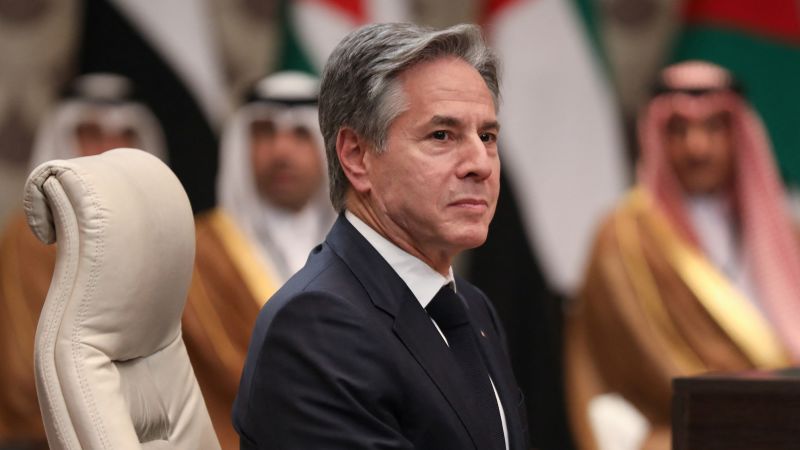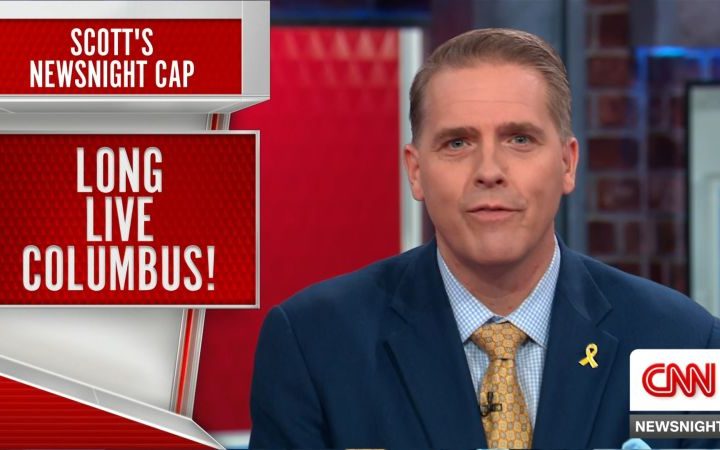Sharp divides persisted between the United States and its Arab partners on their response to Israel’s war against Hamas after Secretary of State Antony Blinken met with his Middle Eastern counterparts in Amman, Jordan on Saturday.
The top US diplomat attended a summit convened by the Jordanian Foreign Minister that was attended by the top diplomats from Egypt, Qatar, the United Arab Emirates, and Saudi Arabia, as well as the secretary general of the Palestine Liberation Organization (PLO).
At the summit, the Arab leaders called for an immediate ceasefire in Gaza while Blinken reiterated US opposition, arguing that it would give Hamas time to regroup and launch another attack on Israel.
Standing alongside Blinken at a press conference after the summit, Jordan and Egypt’s foreign ministers again called for an immediate ceasefire and strongly condemned the Israeli offensive in Gaza.
“The collective punishment – Israel targeting innocent civilians and facilities, medical facilities, paramedics, in addition to trying to force immigration for Palestinians to leave their lands – this cannot be a legitimate self-defense at all,” said Egyptian Foreign Minister Sameh Shoukry.
Blinken again called for Israel to “take every possible measure” to prevent civilian casualties – a message he had relayed in meetings in Tel Aviv on Friday.
The secretary of state has consistently advocated for humanitarian pauses to facilitate getting fuel into the war-torn strip and getting civilians out. He pressed Israeli officials on instituting such pauses when meeting with Prime Minister Benjamin Netanyahu and the war cabinet Friday, but hours later Netanyahu very publicly rejected the idea, saying he would not allow for a ceasefire or a pause until hostages held by Hamas are released.
Still, following his meetings in Amman, Blinken sought to emphasize the points of common interest between the US and its regional partners.
“We come together here today sharing the same fundamental interest and objective: To end this conflict in a way that ensures lasting peace and security in the region,” Blinken said. “We may have different views and positions on certain necessary steps to achieve that objective, but today, we reaffirmed our individual commitments to continuing to work to toward that end.”
“We all agreed on the importance of using our respective influence and capabilities to deter any state or non-sate actor from opening another front in this conflict or taking other destabilizing actions,” Blinken continued.
He also stressed that they all want to increase humanitarian assistance into Gaza.
“I think we all share deep concern about the plight of civilians in Gaza – men, women and children,” he said. “We’ve worked very hard to make sure that that assistance can flow to them.”
Israeli forces have called on civilians to leave north Gaza amid Israel’s intensifying military offensives.
US Special Envoy for Middle East Humanitarian Issues David Satterfield said Saturday that 800,000 “to perhaps a million” people have relocated from north of Wadi Gaza to the south, and that mass relocation has presented significant challenges to the humanitarian response.
Satterfield said that there needs to be a “secure, sustained movement” of aid not only from the Rafah crossing to Gaza, but “into points of need in the south.” He said the US is seeking to establish “practical arrangements” to give aid workers assurances of their safety when they do their work.
The ability to move assistance has scaled up exponentially, particularly in recent days, Satterfield said, but he reiterated that even the 100 or so trucks getting through a day now is not enough.
Although the US believes the current flow of 100 to 120 trucks a day into Gaza is sustainable, “it’s challenged by the environment on the ground in South Gaza,” Satterfield said.
“There was … an environment in Gaza, which allowed more normal commercial life, cooking gas, cooking oil, provisions, necessities of life to move in,” he said. “That’s not the situation now.”
Read the full article here







